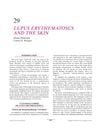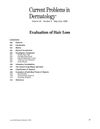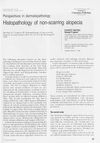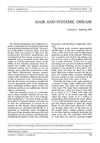Study of Hair and Scalp Changes in SLE Patients
January 1990
Systemic Lupus Erythematosus SLE non-scarring alopecia telogen effluvium telogen phase anagen phase cuticular pattern dystrophy histological analysis immunofluorescence immunoreactants IgG C3 dermo-epidermal junction basement membrane hair follicles lupus hair loss scalp abnormalities hair cycle phases immune response
TLDR SLE patients experience hair loss similar to telogen effluvium, with hair damage and immune activity at hair follicles.
The study examined hair and scalp abnormalities in 10 patients with Systemic Lupus Erythematosus (SLE) who exhibited generalized non-scarring alopecia. The hair loss resembled telogen effluvium, with 61.2% of plucked hairs being in the telogen phase. Scanning electron microscopy revealed that the cuticular pattern of the hair showed cracking, separation, and partial dystrophy, with more changes observed in telogen hair than anagen hair. Histological analysis and cell infiltration studies showed no significant differences from normal scalps. However, direct immunofluorescence detected immunoreactants, mainly IgG and C3, at the dermo-epidermal junction and basement membrane of hair follicles.






